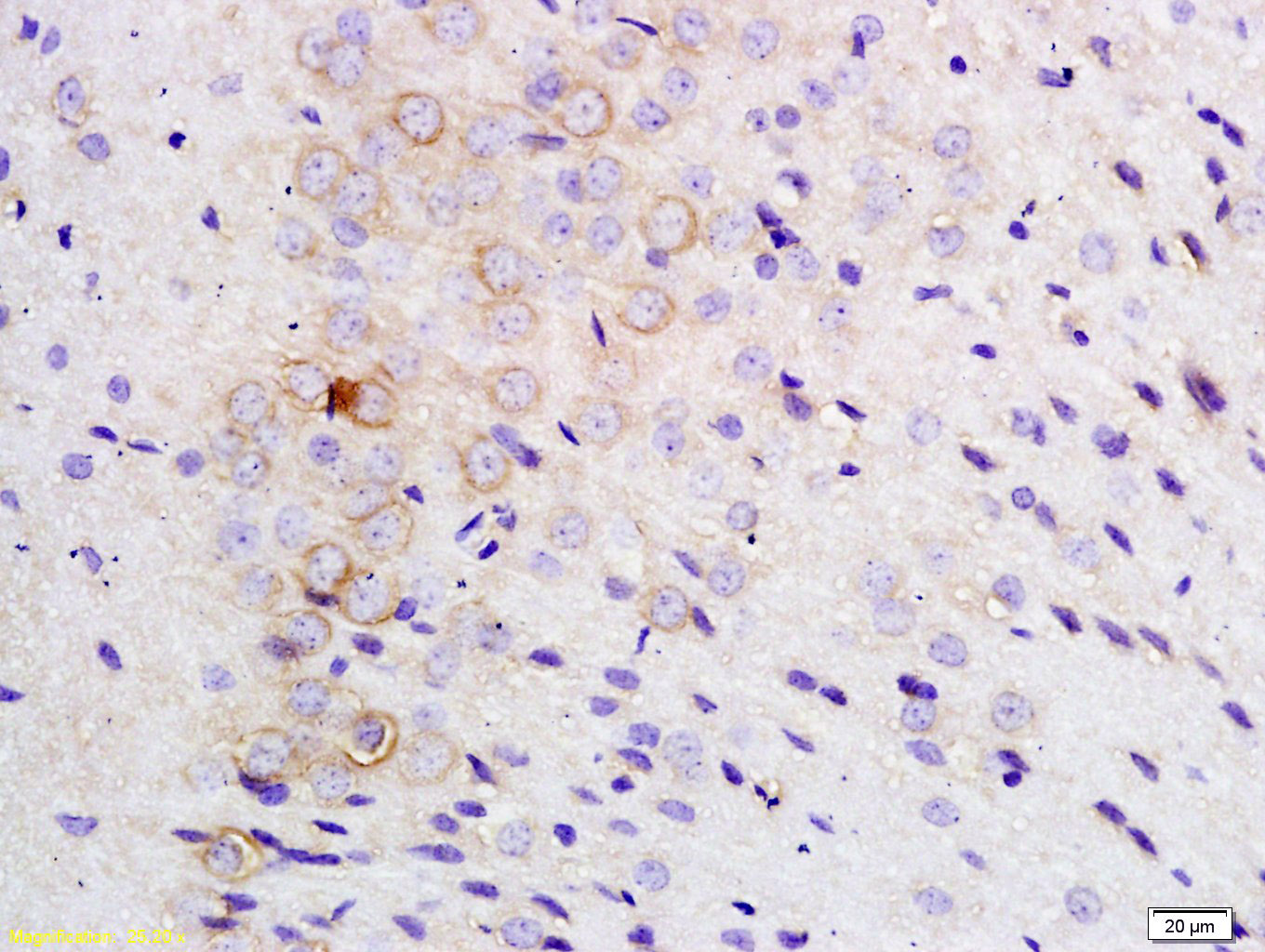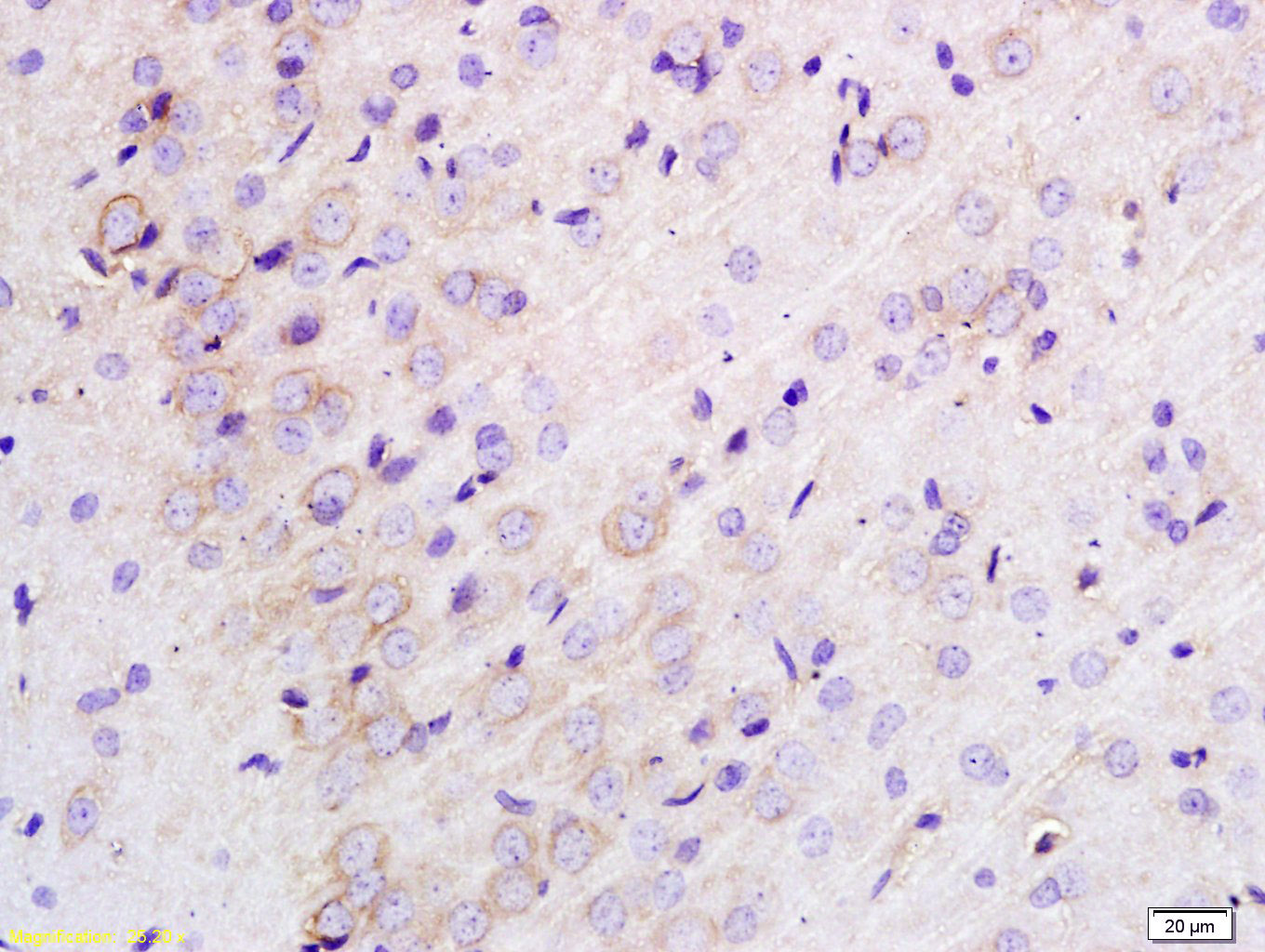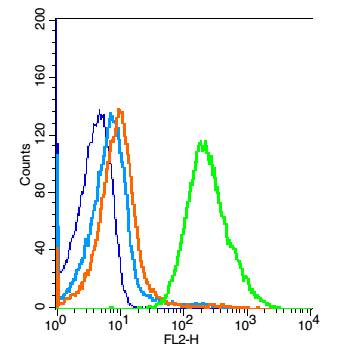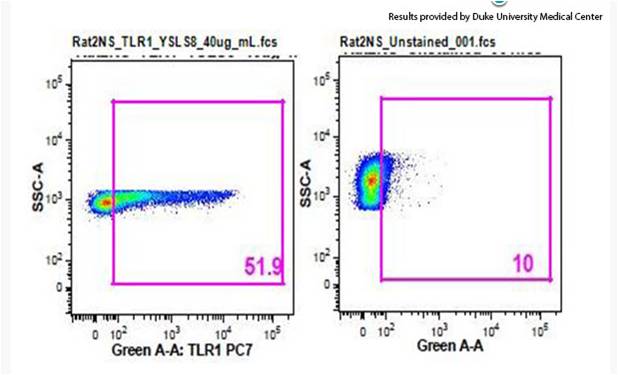
Rabbit Anti-TLR1 antibody
Toll-like receptor 1; GD2:CD281; CD281 antigen; rsc786; Similar to Drosophila Toll protein; TIL; Toll (Drosophila) homolog; Toll like receptor 1 Precursor; Toll/Interleukin 1 receptor like; TLR1_HUMAN.
View History [Clear]
Details
Product Name TLR1 Chinese Name Toll样受体1抗体 Alias Toll-like receptor 1; GD2:CD281; CD281 antigen; rsc786; Similar to Drosophila Toll protein; TIL; Toll (Drosophila) homolog; Toll like receptor 1 Precursor; Toll/Interleukin 1 receptor like; TLR1_HUMAN. literatures Research Area immunology The cell membrane受体 Immunogen Species Rabbit Clonality Polyclonal React Species Human, Rat, (predicted: Mouse, Dog, Cow, Horse, ) Applications WB=1:500-2000 ELISA=1:5000-10000 IHC-P=1:100-500 IHC-F=1:100-500 Flow-Cyt=1μg /test IF=1:100-500 (Paraffin sections need antigen repair)
not yet tested in other applications.
optimal dilutions/concentrations should be determined by the end user.Theoretical molecular weight 87(hu,mo)/91(ratkDa Cellular localization cytoplasmic The cell membrane Form Liquid Concentration 1mg/ml immunogen KLH conjugated synthetic peptide derived from human TLR1: 101-200/786 Lsotype IgG Purification affinity purified by Protein A Buffer Solution 0.01M TBS(pH7.4) with 1% BSA, 0.03% Proclin300 and 50% Glycerol. Storage Shipped at 4℃. Store at -20 °C for one year. Avoid repeated freeze/thaw cycles. Attention This product as supplied is intended for research use only, not for use in human, therapeutic or diagnostic applications. PubMed PubMed Product Detail TLR1 is a member of the Toll like receptor (TLR) family which plays a fundamental role in pathogen recognition and activation of innate immunity. TLRs are highly conserved from Drosophila to humans and share structural and functional similarities. They recognize pathogen associated molecular patterns (PAMPs) that are expressed on infectious agents, and mediate the production of cytokines necessary for the development of effective immunity. The various TLRs exhibit different patterns of expression. The gene encoding TLR1 is ubiquitously expressed, and at higher levels than other TLR genes. Different length transcripts presumably resulting from use of alternative polyadenylation site, and/or from alternative splicing, have been noted for this gene.
Function:
Participates in the innate immune response to microbial agents. Specifically recognizes diacylated and triacylated lipopeptides. Cooperates with TLR2 to mediate the innate immune response to bacterial lipoproteins or lipopeptides. Acts via MYD88 and TRAF6, leading to NF-kappa-B activation, cytokine secretion and the inflammatory response (By similarity).
Subunit:
Binds MYD88 (via TIR domain). Interacts with CNPY3 (By similarity). Interacts (via extracellular domain) with TLR2. Ligand binding induces the formation of a heterodimer with TLR2.
Subcellular Location:
Cell membrane; Single-pass type I membrane protein (By similarity). Cytoplasmic vesicle, phagosome membrane; Single-pass type I membrane protein (By similarity).
Tissue Specificity:
Ubiquitous. Highly expressed in spleen, ovary, peripheral blood leukocytes, thymus and small intestine.
Similarity:
Belongs to the Toll-like receptor family.
Contains 19 LRR (leucine-rich) repeats.
Contains 1 LRRCT domain.
Contains 1 TIR domain.
SWISS:
Q15399
Gene ID:
7096
Database links:Entrez Gene: 7096 Human
Entrez Gene: 21897 Mouse
Omim: 601194 Human
SwissProt: Q15399 Human
SwissProt: Q9EPQ1 Mouse
Unigene: 621817 Human
Unigene: 654532 Human
Unigene: 273024 Mouse
Product Picture
Antigen retrieval: citrate buffer ( 0.01M, pH 6.0 ), Boiling bathing for 15min; Block endogenous peroxidase by 3% Hydrogen peroxide for 30min; Blocking buffer (normal goat serum,C-0005) at 37℃ for 20 min;
Incubation: Anti-TLR1 Polyclonal Antibody, Unconjugated(SL1919R) 1:200, overnight at 4°C, followed by conjugation to the secondary antibody(SP-0023) and DAB(C-0010) staining
Tissue/cell: rat brain tissue; 4% Paraformaldehyde-fixed and paraffin-embedded;
Antigen retrieval: citrate buffer ( 0.01M, pH 6.0 ), Boiling bathing for 15min; Block endogenous peroxidase by 3% Hydrogen peroxide for 30min; Blocking buffer (normal goat serum,C-0005) at 37℃ for 20 min;
Incubation: Anti-TLR1 Polyclonal Antibody, Unconjugated(SL1919R) 1:200, overnight at 4°C, followed by conjugation to the secondary antibody(SP-0023) and DAB(C-0010) staining
Blank control: Raji(blue).
Primary Antibody:Rabbit Anti-TLR1 antibody(SL1919R), Dilution: 1μg in 100 μL 1X PBS containing 0.5% BSA;
Isotype Control Antibody: Rabbit IgG(orange) ,used under the same conditions );
Secondary Antibody: Goat anti-rabbit IgG-PE(white blue), Dilution: 1:200 in 1 X PBS containing 0.5% BSA.
Protocol
The cells were fixed with 2% paraformaldehyde (10 min) and then permeabilized with ice-cold 90% methanol for 30 min on ice.The cells were washed twice with phosphate-buffered saline (PBS).The cells were then incubated in 1 X PBS containing 0.5% BSA + 1 0% goat serum (15 min) to block non-specific protein-protein interactions followed by the antibody (SL1919R, 1μg /1x10^6 cells) for 30 min on ice. The secondary antibody used was Goat Anti-rabbit IgG/PE antibody at 1/200 dilution for 30 min on ice. Acquisition of 20,000 events was performed.
Bought notes(bought amounts latest0)
No one bought this product
User Comment(Total0User Comment Num)
- No comment






 +86 571 56623320
+86 571 56623320
 +86 18668110335
+86 18668110335

